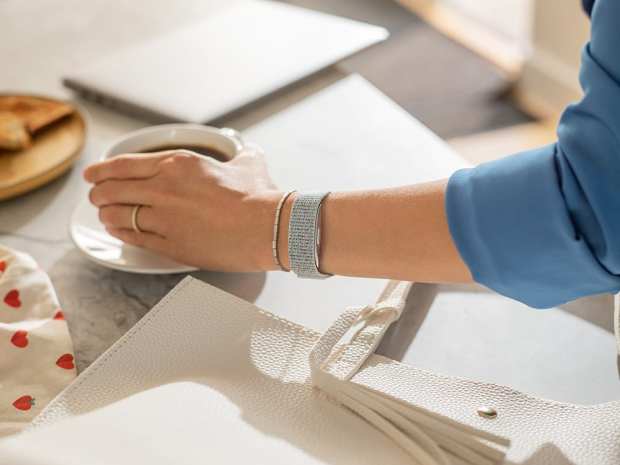Amazon Halo’s Effect On Healthcare Payments

The consumerization of payments continues. And it may be enough to fix what ails healthcare.
In an interview with Karen Webster, John Talaga, executive vice president and general manager, healthcare at Flywire, said healthcare firms are getting creative with the ways they grapple with collecting on what patients owe — and closing revenue and cash flow gaps.
The conversation took place amid a backdrop where as recently as April, Talaga told Webster as the pandemic started to really take root that at least some of Flywire’s healthcare clients were projecting a 30 percent revenue shortfall this year.
Turns out those projections were a bit pessimistic.
“Everyone looks at the base case and the worst case, and we certainly didn’t hit the worst case for most of the big systems,” noted Talaga. “Volumes went down. But what’s happening now is there is a rebound cause even as [the virus] is still going on.”
Indeed, economies are opening a bit, and some individuals are returning to providers to make sure they take care of appointments and care that had been scheduled or pushed out. Maybe a bit.
But then again, the root problems in healthcare remain. Talaga noted that we still have a health system in which patients are, increasingly, on the hook for a significant share of healthcare costs — as much as 30 percent at present.
But along with low volumes that have been the hallmark of the past few months, Talaga said there has been a lingering impact from the lag time of payments from insurance companies and patients.
The deficit for primary care practices stands at about $15 billion, as consumers inch back toward at least some semblance of normalcy when it comes to healthcare, at least for preventative care.
The pandemic, then, has been spurring healthcare providers to be motivated to change — to approach their patients with personalized payment plans, revamped billing practices — and a renewed effort to understand what’s affordable.
“It’s about being able to identify what patient’s financial capacity to pay and being able to tailor those engagement interactions and communications to the patient.”
That means considering payment plans or “intelligent discounts” that will help keep patients on track to get the care they need.
Those flexible payment options are best extended at what Talaga termed the point of commerce — not necessarily the point of service or pre-service. Simply offering a range of payment options can be an influencer in getting patients to purchase and use what’s on offer — in this case, healthcare. Flexible payment options may also encourage users to embrace additional procedures and services and add it to the rolling tally, paid down over time, in a way that engenders loyalty.
“When you’re admitted to the hospital for a procedure, you have an estimate of what that’s going to cost,” he said. “And yet there may be things that happen that require additional treatments or specialist store. There are platforms that are emerging that provide these marketplaces that offer subscription services and purchasing of … things like MRIs and testing. There are doctors with a flat rate price point [to] provide transparency and affordability.”
The greenfield opportunity is there as a full 70 percent of hospitals, he estimated, have yet to embrace payment plan options that are fully and digitally enabled, mired as they are in paper checks. Data exchange and back-end systems, along with reconciliation processes, also must be improved.
Nonetheless, he maintained, “We’re seeing a huge demand for — and more of a sensitivity than there was before, along with a greater sense of urgency — for these hospitals to figure out how they’re digitizing their experience,” he said.
The Consumerization and Digitalization of Healthcare
The customers themselves have been increasingly comfortable with the great digital shift in healthcare — as evidence, look at the growth in telehealth and the Halo health and wellness wearable unveiled by Amazon.
For individuals, “it’s not just brick and mortar anymore, and therefore they want everything to be more digital,” he said.
It will take some time for hospitals to catch up, he said. But marquee names such as Apple and Amazon have entered the fray.
The growth in wearables, maintained Talaga, can be likened to an emerging lifestyle category — where, for example, a pacemaker helps maintain heart health once a patient leaves the hospital. There’s a net financial impact here, too. The more an individual stays out of a doctor or hospital setting, the more affordable healthcare becomes.
There’s fragmentation in the market too as 40 percent of millennials do not have a primary care physician. Walmart has full-service clinics on site with a range of typical medical services. The transformation of healthcare, he said, is moving to a new model where hospitals are being viewed as centers for more acute care situations. Marketplace models, such as Sesame, profiled by PYMNTS last month, are offering healthcare-as-a-product that turns medical care into a good/service that can be browsed, mulled and purchased.
“You’re never going to replace direct interaction between a doctor and a patient,” said Talaga. You can’t. But having that care be more decentralized,” through online channels and wearables, “to lower the amount of expense that goes into the hospital is very beneficial.”
